
In the Vineyard :: February 6, 2023 :: Volume 23, Issue 3
International News
Synod, Synod, Synod, Synod …
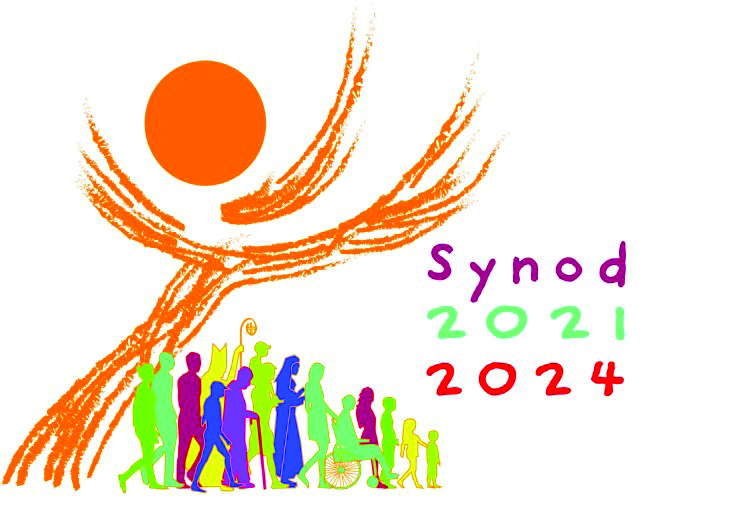
U.S. Input and VOTF Participation
This week Mary Pat Fox and Donna B. Doucette of Voice of Faithful will participate in conference calls with other organizations in discussions about the Continental stage working document “Enlarge the space of your tent.” The calls are part of the consultation U.S. bishops (and all bishops worldwide) must conduct prior to preparing their continent’s document for the Synod’s General Secretariat. The U.S. and Canada constitute the North American continent for this stage. Ultimately the Continental documents will be forged into a working document for the first Bishops’ meeting on Synodality in Rome, October 2023.
We thank all of you who participated in our Continental sessions to help Mary Pat and Donna provide our VOTF perspective on the working document. We will update you on both the preparation meetings last week and the Synod session this week in a later issue of In the Vineyard. Those who participated in our sessions last week will receive the reports a bit earlier, as soon as we finalize them.
Want to catch up on where we are in the process?
- Watch the video summarizing where we are in the Synod process and the results so far.
- Read the Continental document (DCS) “Enlarge the space of your tent.”
- Review the USCCB National submission from the Diocesan Stage of the Synod and the VOTF submission that went to the General Secretariat.
IN THIS ISSUE, also scroll down to read Dr. Phyllis Zagano’s article “Is There Space in the Tent?” published last month in L’Osservatore Romano.
And if you want to know what Rome is telling the bishops about synodality, here’s the letter from Cardinals Mario Grech and Jean-Claude Hollerich explaining the role of bishops in “ongoing synodality.” It has some interesting paragraphs, suggesting that Rome is getting tired of the anti-Francis tirades and refusals to participate in the Synod. The cover release for the letter suggests that parishioners make sure their bishop has received and read his copy, and perhaps bring him a copy if he has not.
Africa’s Input
In Africa, regions have prepared a draft response at a meeting in Nairobi and will finalize the document early in March at a meeting in Addis Ababa, Ethiopia. You can find complete details on the meetings and other Synod activity in an African Synod Newsletter. Some of the interesting tidbits: The March meeting “will bring together 155 delegates comprising 27 laywomen, 26 laymen, 16 young girls, 16 young men, 5 seminarians, 5 novices, 8 brothers, 12 sisters, 18 priests, 15 bishops and 7 cardinals.” They also expect to have delegates from other faith groups.
The newsletter includes a plea from “a section of Catholics in West Africa” voiced by the RECOWA Secretary General Fr. Vitalis Anaehobi to “redefine Church values” and eliminate the Synod’s tent imagery. Fr. Anaerobi says they prefer the image of a family and a house “with rules and principles and not just a tent where anybody can just come in.” Other portions of the report, from different sectors in Africa, focused on family as well but raised up issues of political instability, economics, ecumenism, and inculturation as well as the need to keep youth in the Church.
Europe’s Input
Synod participants representing the European Continent are meeting in Prague, Czech Republic, this week, Feb. 5 through 12. It’s a huge undertaking, with two to five participants from every nation, representatives from the General Secretariat as well as various Vatican offices, and invited guests ranging from the Catholic Orthodox Forum and Opus Dei to Caritas Europe, Catholic universities, Focalare, the Taize Community, and everything in between. Plus 390 people who will watch the proceedings virtually.
The list of delegates makes interesting reading. Along with the bishop from each country are numerous lay people and religious. Austria has sent one lay man and two lay women with their bishop. Belgium (and others) has done the same. Croatia sent a bishop emeritus, a nun, one lay man and one lay woman. England & Wales sent the bishop, one priest and two women–so did Ireland. Scotland sent a bishop, a priest, a nun and another lay woman; Spain, a bishop, two priests, a nun and a lay woman. Almost every delegation has an equal lay/cleric presence or one that numbers more lay people than clerics. The Ukraine Latin Church did buck that trend; they sent an archbishop, two auxiliary bishops, and two women.
Oceania’s Input
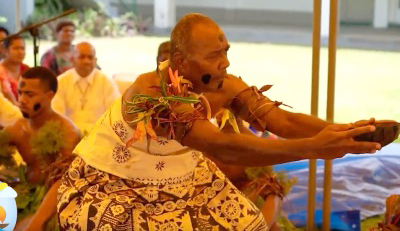
The Federation of Catholic Bishops Conferences of Oceania also has just opened its Continental Synod, with a Mass at Sacred Heart Cathedral in Suva described as “steeped in Fijian spirituality and tradition.” You can see the program and other information here.
Linking Vatican II and Synodality
Synodality, of course, grows out of our recovery of the earliest form of Church governance, from the days of the Apostles, as well as from the Church Constitutions of Vatican Council II. You can participate in discussions about the “People of God” in Vatican Council II’s Constitution on the Church interfaces and synodality (“Enlarge the space of your tent”) this Wednesday in a session hosted by the Association of U.S. Catholic Priests Vatican II Working Group. Here’s the link for Wednesday’s meeting:
- February 8 at 6 PM Central Time (7 pm Eastern, 5 pm Mountain, 4 pm Pacific)
Join Zoom Meeting: https://us02web.zoom.us/j/89523180498
Meeting ID: 895 2318 0498
Please read the Continental Document before the meeting. Please invite others to join in, especially persons involved in parish and other ministries—whether members of AUSCP or not.
Is There Room in the Tent?
By Phyllis Zagano, Ph.D., from the State University of New York at Stony Brook (1979).
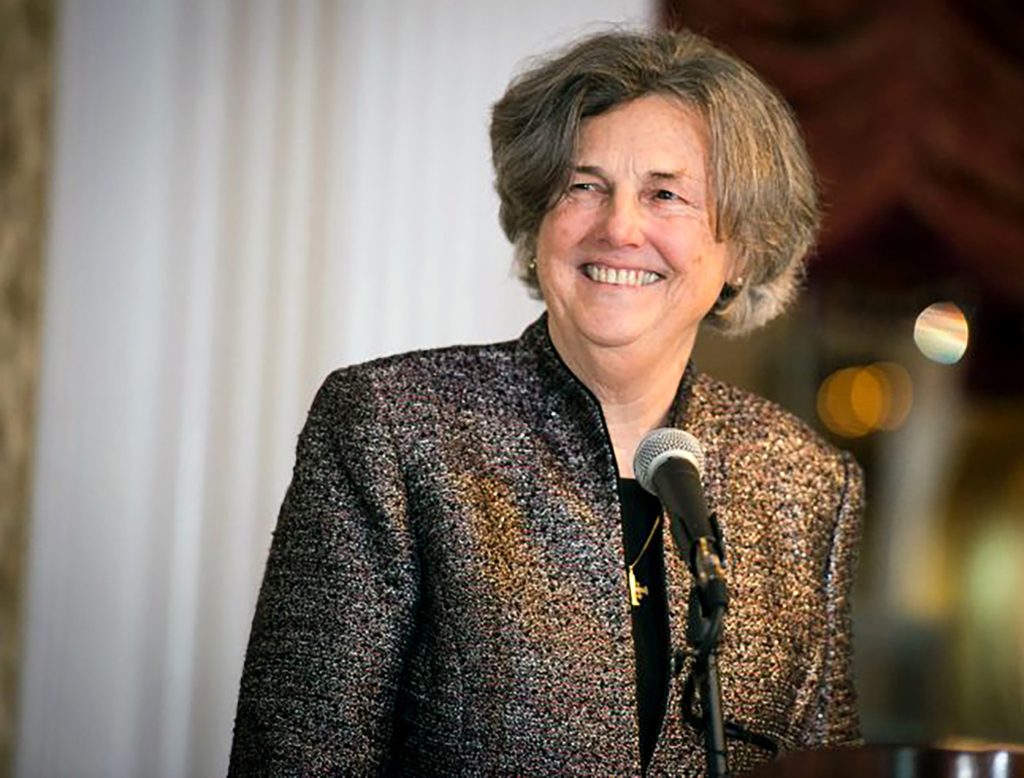
Phyllis Zagano is senior research fellow in residence and adjunct professor of Religion at Hofstra University, Hempstead, New York. In 2016, she was appointed by Pope Francis to the Study Commission on the Diaconate of Women. This article was originally published in L’Osservatore Romano.
As the Church prepares for the next phase of the Synod on Synodality, one of the most pressing issues is the relationship between women and the Church, combined with the problem of clericalism. The Working Document clearly states that “almost all reports raise the issue of full and equal participation of women.” (No. 64.)
Many national reports asked to restore women to the ordained diaconate, yet the Synod’s Working Document for the Continental Stage refers to “a female diaconate.” Does this indicate ongoing discernment about the ability of women to receive sacramental ordination as deacons, despite the historical evidence of ordained women deacons? While women are increasingly included as professional managers within Church structures, notably within the Roman Curia, deep resistance to accepting historical precedence of women’s ordained ministry remains.
Can the Church overcome clericalism and the denial of history?
Preach the Gospel!
Pope Francis’s Apostolic Constitution Praedicate Evangelium: On the Roman Curia and Its Service to the Church in the World makes it abundantly clear that the Church’s mission is to preach the Gospel. The Apostolic Constitution breaks the link between clerical status and Curial service, taking a major step in preaching the Gospel truth of the equality of all persons.
In fact, preaching the Gospel is a task for all Christians, but preaching the Gospel during the liturgy of the Mass is a specific diaconal task.
While historical records and liturgical manuscripts demonstrate that both Eastern and Western bishops ordained women as deacons, controversy lingers over the exact nature of those ordinations. Even so, history affirms that bishops in different eras and in various territories ordained women as deacons within the sanctuary, during Mass and in the presence of other clergy, through the imposition of hands and the invocation of the Holy Spirit. The new women deacons self-communicated from the chalice and the bishop placed a stole around their necks. Most importantly, the bishop called these women deacons, like Saint Phoebe before them (Rom 16:1-2).
Contemporary discussion revolves around two questions: 1) Can a woman represent Christ, the Risen Lord? 2) Does the ban on women priests apply to women deacons?
Despite some scholarly obfuscation, the answers are clear: yes, women can image Christ; no, the priesthood is not the diaconate.
Can a woman represent Christ?
The so-called “iconic argument,” that a woman cannot represent Christ, appeared in the Sacred Congregation for the Doctrine of the Faith’s declaration Inter Insigniores: On the Question of Admission of Women to the Ministerial Priesthood (October 15, 1976). The declaration cites Saint Thomas Aquinas’s statement that “Sacramental signs represent what they signify by natural resemblance,” further arguing that the necessary “natural resemblance” is to the maleness of Jesus, “for Christ himself was and remains a man.” Such emphasizes the accident of gender over the substance of the Incarnation: God became human. The human male Jesus is not the Risen Lord, the Christ whom all Christians can represent.
The second major point in Inter Insigniores is that Jesus chose only male apostles, thereby affirming the document’s early statement: “The Catholic Church has never felt that priestly or episcopal ordination can be validly conferred on women.” But in supporting its “iconic argument,” Inter Insigniores does not mention the diaconate. Eighteen years after Inter Insigniores, John Paul II’s Apostolic Letter Ordinatio Sacerdotalis: On Reserving Priestly Ordination to Men Alone (1994), dropped the “iconic argument.” Ordinatio Sacerdotalis does not mention the diaconate.
Does the ban on women priests apply to women deacons?
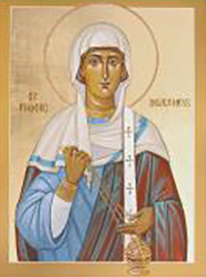
While neither Ordinatio Sacerdotalis nor Inter Insigniores addresses the question of women deacons, some commentators present what they term the “unicity of orders” to connect the diaconate and the priesthood. Their argument assumes that diaconal ordination implies eligibility for priestly ordination and because women cannot be ordained priests, neither can they be ordained as deacons.
The false reasoning of the “unicity of orders” argument is rooted in the medieval cursus honorum (course of honor), the clerical steps from tonsure through the minor orders of porter, lector, exorcist, acolyte and the major orders of subdeacon, deacon, and priest. The cursus honorum required that anyone to be ordained deacon had to be eligible for priestly ordination, effectively ending the diaconate as a permanent vocation.
Although diaconal ordination had become only a step toward priestly ordination, the Council of Trent (1545-1563) discussed the minor orders and the diaconate. During its Twenty-third session, as the Council was nearing its end, it approved a canon allowing married clerics to exercise the four minor orders. The Council also apparently affirmed the sacramentality of diaconal ordination, despite continued academic discussion on the question. Any discussion then about the historical ordinations of women, known to the 12th century in the West, is unknown.
Restoring and Renewing the Diaconate
Since its restoration by the Second Vatican Council as a permanent office to include married men, the diaconate has flourished. Lumen Gentium 29 affirmed that deacons receive the imposition of hands “not unto the priesthood, but unto a ministry of service,” and to date some 47,000 men have accepted the call to ordained diaconal ministry.
Two bishops, one from Italy and another from Peru, had suggested women deacons to the Council, which took no decision. Some years later, Paul VI reportedly asked the International Theological Commission (ITC), or some of its members, to review the question. Both Cipriano Vagaggini, a member of the ITC, and Philippe Delhaye, its secretary, wrote positively about ordained women deacons in the 1970s, joined by Roger Gryson. A decade later Aimé-Georges Martimort published a negative rejoinder.
While an ITC subcommittee studied the topic between 1992-1997, its reported positive report was not published.
Then, in 1998, the Congregation for Catholic Education’s Ratio fundamentalis institutionis diaconaorum permenentium affirmed, “with sacred ordination, he [the deacon] is constituted a living icon of Christ the servant within the Church,” possibly attempting to eliminate the restoration of women to the order.
By 2002, a second ITC subcommittee report identified the deacon as being and as acting in persona Christi servi, revivifying the abandoned “iconic argument.” The ITC subcommittee stated that male and female deacons of history did not share identical tasks and duties, overlooking the sacramental tasks of women deacons. Further, it wrote that their ordination rites differed, ignoring those rites that were identical excepting for the use of pronouns. Importantly, the 2002 document affirmed that the diaconate and the priesthood were distinct orders, concluding that the question of women deacons required a Magisterial decision.
At the request of the International Union of Superiors General (UISG), Pope Francis named a commission to study women in the diaconate that met between 2016 and 2019. He called a second commission in 2020, which seems to have met between 2021-2022. Neither commission report has been published.
What can the Synod do?
The point of the Synod is to prepare a listening Church, one that surely listens to questions about inclusion, but one that listens as well to the Word of God as clarified by the Magisterium. Some issues are genuinely painful, and the People of God may find it difficult to “walk together” when the answer to their questions is “no.”
But the question of restoring women to the ordained diaconate, a permanent vocation that does not imply eligibility for priesthood, is easy to answer in the affirmative. The historical, anthropological, and theological work is complete. Women were ordained as deacons. Women are made in the image and likeness of God. The diaconate is not the priesthood.
People around the world have asked the Church to outgrow clericalism and recognize the managerial and ministerial abilities of women. There is progress in adding women to management. The extended Synod process should not delay the restoration of women to ordained diaconal ministry.
Moving Forward on Synodality
The response to the Continental Document is only the first step in VOTF’s ongoing Synod efforts. If you would like to help us organize working sessions to help implement synodality in the Church, please send your name, email address, and a brief statement about your interest to Donna B. Doucette at dbdoucette@votf.org. The working group will develop ways for VOTF members and others to continue learning about and cultivating synodal processes throughout the Church.
Pope Francis Agrees: Homilies Could be Better – and Shorter!
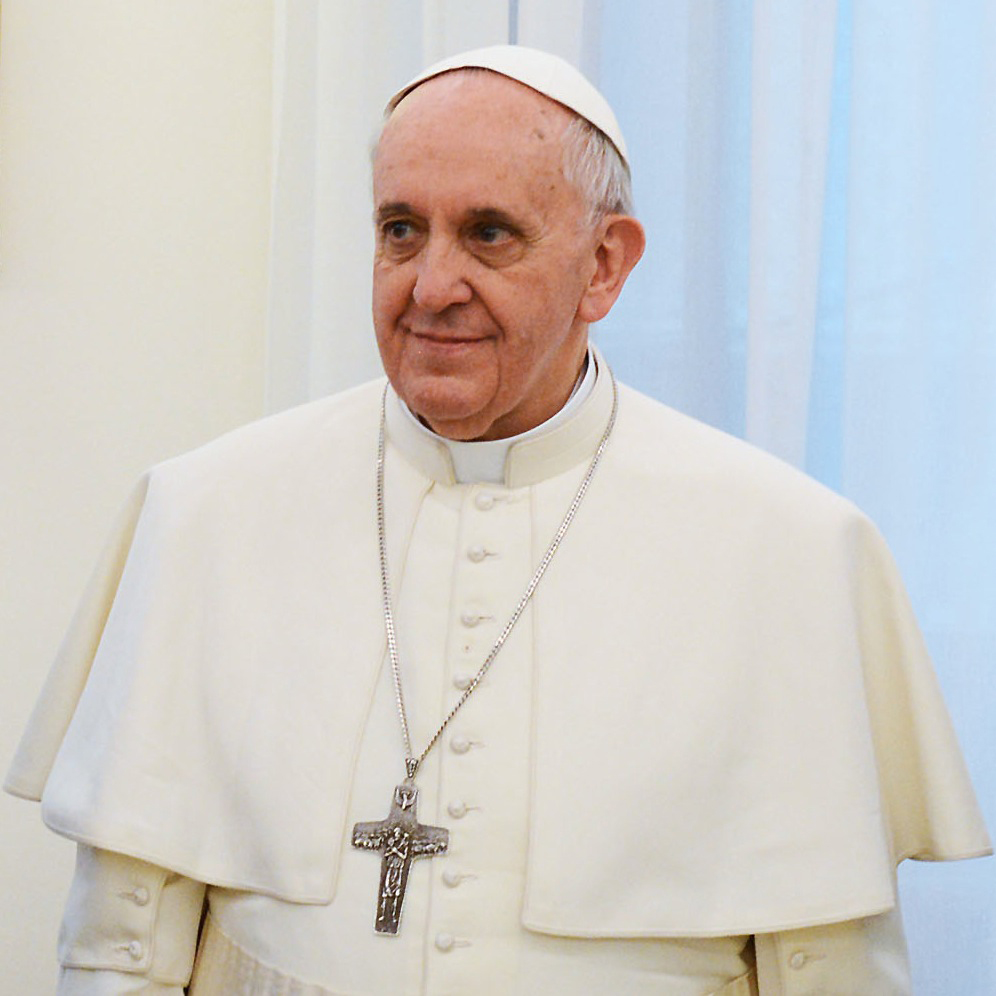
With his recent criticism of homilies in the Church – “in general, the homilies are a disaster” – Pope Francis joins a majority of laypeople in their wish for better homilies. During a recent meeting with students in a liturgy course, the Pope asked priests to be careful with their homilies, without turning them into philosophy classes, and to keep them brief. “Your words should be simple. Words that everyone can understand. Don’t give long homilies,” he told the gathering of priests and nuns. He urged them to try making them interesting too; “Your homilies should not be boring. Your homilies should reach people’s hearts, because they come from your heart.”
The Pope is not alone in this sentiment. Synod participants across the board also called for vibrant liturgies and engaging homilies; better communication from priests and bishops; more efforts to integrate the different linguistic communities in multiethnic parishes. Or, as the Continental Stage working document Enlarge the Space in Your Tent says, “The quality of homilies is almost unanimously reported as a problem.”
The feeling that homilies are “boring,” is not new. Participants at the 2005 Synod of Bishops on the Eucharist and the 2008 synod on the Word of God requested a handbook to help priests with their homilies, and in 2014 one was released.
Among other things, the handbook says that “The homily in some sense parallels the distribution of the Lord’s body and blood to the faithful during the Communion rite. In the homily God’s holy word is ‘distributed’ for the nourishment of his people.”
The document includes quotations from the long section about preparing and delivering homilies in Francis’ 2013 apostolic exhortation, Evangelii Gaudium (“The Joy of the Gospel”), including his belief and practice that the homily “should be brief.”
In making suggestions, the directory notes that its application can and should vary depending on the congregation and the individual preacher with his “gifts and limitations.”
In general, however, it says an effective homily always requires prayer, preparation, knowledge of the people who will be in the congregation, a reflection on what is happening in the community and the world, and an invitation to the Holy Spirit “as the principal agency that makes the hearts of the faithful amenable to the divine mysteries.”
Good advice. But apparently, this document should be revisited.
To read more, click here and here.
Prayer Vigil for Synod Success: Sept. 30
The Taize Community is hosting a prayer vigil on Sept. 30 for the success of October’s bishops meeting on the Synod. The ecumenical prayer vigil will take place in Rome in the presence of Pope Francis and representatives of different Churches, “to unite us in praise and silence, in listening to the Word. Young people aged between 18 and 35 from across Europe, from all Church backgrounds, are invited from Friday evening to Sunday afternoon and will be welcomed for a weekend of sharing, to journey together as the people of God.”
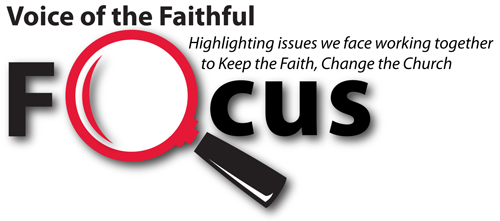
Top Stories
Fordham report faults Jesuits for stressing discretion in handling abusive priests
“Anew report from the Jesuit-run Fordham University on the long-term impacts of clergy sexual abuse criticizes the global Jesuit religious order for placing importance on discretion when handling Catholic priests accused of abuse, instead of on discipline or prevention of further abuse. The report, released Jan. 26, summarizes the findings of 18 research projects that were part of a yearslong effort to better understand clergy abuse.” By Aleja Hertzler-McCain, National Catholic Reporter
- New report details path forward from clergy sexual abuse crisis, By Patrick Verel, Fordham News
Pope Francis admits mishandling of sex abuse cases, says church must do more
“Pope Francis has shed light on the Catholic Church’s handling of sex abuse allegations against East Timor’s Nobel Peace Prize-winning independence hero, suggesting that he indeed was allowed to retire early rather than face prosecution or punishment. Francis made the revelation in a wide-ranging interview Tuesday (Jan. 17) with The Associated Press, in which he also denied he had a role in deciding the case of a famous Jesuit artist whose seemingly preferential treatment cast doubt on the Vatican’s commitment to cracking down on abuse.” By Nicole Winfield, Associated Press, in America: The Jesuit Review
Vatican weighs in on German plan for governing ‘council’ of laity and bishops
“Senior Vatican officials have notified the bishops of Germany that they are not empowered to create a proposed legislative body made up of clergy and laity, which would act as a governing body for the whole Church in the country. ‘We wish to make it clear that neither the Synodal Path, nor any body established by it, nor any Episcopal Conference has the competence to establish the ‘Synodal Council’ at the national, diocesan or parish level,’ a Jan. 16 letter sent to the German bishops explained.” By Luke Coppen and J.D. Flynn, The Pillar
- German bishop dismisses Vatican concerns over a permanent synodal council, By A.C. Wimmer, Catholic News Agency
- Pope warns German church reform process elitist, ideological, By Nicole Winfield and Frances D’Emilio
- Vatican, German bishops spar over proposal for new ‘Synodal Council,’ By Elise Ann Allen, Cruxnow.com
Vatican’s handling of Rupnik case shows church considers women unequal
“The global Jesuit order issued a notice in early December that it had placed restrictions on the ministry of Jesuit Fr. Marko Rupnik, an internationally known religious artist, after accusations he had abused several adult women. While remaining deliberately vague about the reasons for the move, the Jesuits seemed keen to stress that ‘no minors were involved.’ While the Jesuits and the Vatican’s Dicastery for the Doctrine of the Faith avoided further comments on the case, some Italian blogs reported that Rupnik, a charismatic star in certain circles, had been accused of spiritually and sexually abusing consecrated women of the Loyola Community, a religious community he had co-founded in Slovenia in the early 1980s.” By Doris Reisinger, National Catholic Reporter
Click here to read the rest of this issue of Focus …
Letters to the Editor
Obstacles to Staying in the Church
Our recent invitation to join a discussion about the Continental Synod Document prompted one of our members to write.
I want to express my response to the entire situation. The start of VOTF gave me some hope, but in recent years, I have come to despise the institution of the church–its continued lack of meaningful justice for so many people who have been hurt, its sexism, and its homophobia. I became tired of hearing about a priest shortage and how they might need to have married priests before even considering ordaining nuns. I saw the local nuns living in a run-down institutional building while across the parking lot, the priests lived in a lovely large house, with cooking and housekeeping included. I saw the pastor go on golf trips to Florida while the nuns made do with their vow of poverty.
I attended Catholic school from preschool through the twelfth grade. I saw priests have fire-and-brimstone tantrums from the altar about wives needing to be submissive to their husbands, and loudly associating gay people with pedophilia, which is astounding as a concept but especially coming from the church. I saw behavior over and over again what I know was absolutely not what Jesus would do.
I feel “ethnically Catholic,” having spent my early schooling steeped in the church, and though I have longed for an alternative spiritual community, I do not feel that I would fit in.
I would certainly not fit in now, because in light of everything I have seen and heard, in light of the two people I know who were abused by priests when they were little girls, I have, along the way, lost my faith entirely. I think the current pope has great ideas, but this is a corrupt organization. When they were threatening to close churches, I was visiting Vatican City, and saw the accumulation of vast amounts of wealth, property, and power, and I realized that churches could be saved if the Vatican would part with just a bit of the riches.
I apologize for responding to your e-mail message in this way, but I suppose this has built up for a long time. If you know of anywhere else to where I might direct it, please let me know. I realize that mine is not a hope-filled situation, and I regret that–but it all began with Cardinal Law being shipped off to a post in the Vatican instead of being defrocked and imprisoned; I can trace my loss of faith directly there.
I appreciate all that VOTF has done over the years to right the wrongs, and I wish you all the best in your admirable efforts.
Sincerely,
Coleen O’Hanley
**********
One Approach to the Lack of Priests
Inspired by a listening session, a VOTF member wrote to his local Archbishop with some suggestions on how to solve the problem of too few priests to celebrate Mass. No response as of yet!
Dear Father:
The authority you hold could solve our most pressing problem here.
I’m a ‘cradle Catholic’ and also a political science graduate from our own UW. The combination suggested I write to you.
As a fellow American, you understand and appreciate how a federal system of governance works. At the top level, purpose and policy of the organization is set, along with appropriate rules and regulations, and of course the appointment/assignment of personnel. The actual work is done at lower levels, down to where the organization actually interacts with its constituents. All have relevant power and authority to fulfill the purpose of the organization.
Here in this part of the Church, you’re ‘IT.’ Your primary function is to provide the faithful of the Seattle Archdiocese with the ministry they need to worship together. At present, you don’t have enough personnel to staff all our parishes and enable us to celebrate the Mass as Jesus wants us to.
Nor will you, as things are. No matter how many exhortations and prayers and directives from Rome are thrown out, there won’t be vocations to fill our needs. Especially now, young men are not going to respond to being told that their calling requires lifelong celibacy. Nor can women be just wives and mothers, caregivers and teachers, and suppress believing they’re called by the Holy Spirit to use their talents and abilities and devotion for the betterment of the Church. And most of all, Father, the laity cannot be told that clinging to ancient Hierarchical regulations is more important than being able to gather together to worship and celebrate the Mass.
Here’s where your local top authority comes in. You merely announce that having explored and exhausted every alternative, you are ordaining additional priests from the available candidates here. Some married men, some women, married or not. You have given thoughtful and prayerful consideration to their qualifications and motivation to serve.
No doubt this would set off some consternation and brouhaha in Rome. But the church leaders there are not here … and they have no way of solving our problems. You do!
After a very short time, the brouhaha would blow over, and new priests would be accepted, exactly as they have been in the Church of England, the other Protestant faiths, and even Judaism.
Perhaps a handful of stick-in-the-mud ultra-orthodox conservatives would stomp out … but far more people would flood in, particularly so-called ‘fallen away Catholics,’ but lots of others, once the Church made clear that ALL are welcome and respected and have full scope to serve themselves and our faith community.
The faithful wish to gather together to worship. It matters little what the sex or marital status may be of those leading our worship. You can fix this, Father, and I hope that you will. FWIW, everyone I’ve encountered in the Synod process believes this.
Respectfully, Scott H. Kruize
Comments?
Please send them to Siobhan Carroll, Vineyard Editor, at Vineyard@votf.org. Unless otherwise indicated, I will assume comments can be published as Letters to the Editor.
Reminder: Please notify office@votf.org if you change your email address
